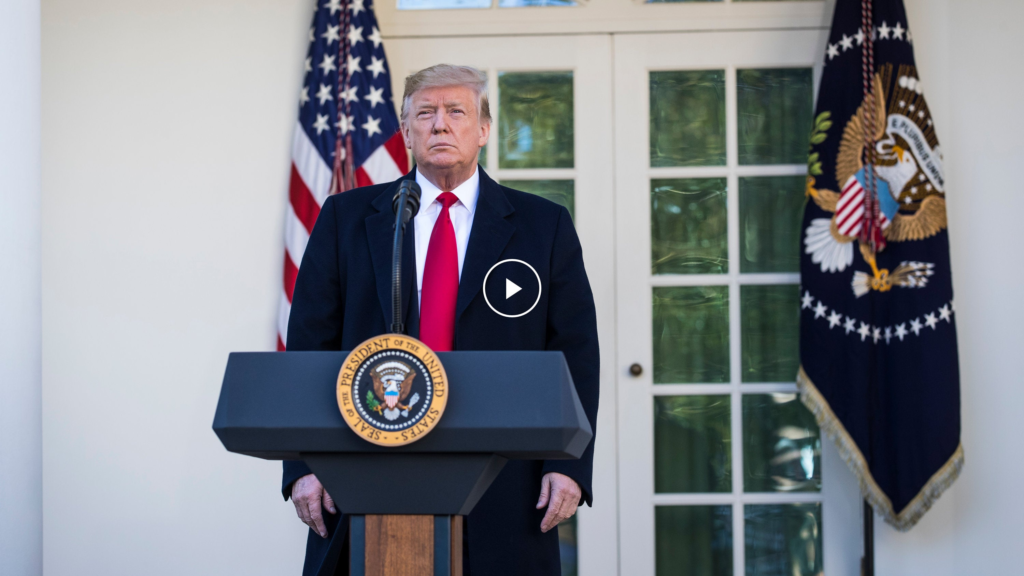Government shutdown talks are once again dominating the political scene in the United States. President Donald Trump is set to meet Senate Minority Leader Chuck Schumer and House Minority Leader Hakeem Jeffries to try to prevent a shutdown when government funding runs out on September 30. The meeting could decide whether essential government operations continue without disruption or if the country faces another costly shutdown.
The Shutdown Threat
When Congress does not pass funding bills, many parts of the federal government are forced to shut down. This leads to furloughed workers, closed agencies, and paused services. Essential services such as border security, air traffic control, and military operations continue, but often with strain and delayed pay for employees.
The current crisis stems from disagreements over spending priorities. Democrats are pushing for protections in healthcare programs, including subsidies for insurance under the Affordable Care Act and restoring Medicaid funding. Republicans have rejected those additions, favoring a cleaner short-term spending bill. The Senate recently blocked a GOP proposal that would have funded the government until November, setting the stage for high-stakes negotiations.

Key Figures at the Table
The scheduled talks bring together three influential leaders with sharply different positions.
Donald Trump
As President, Trump holds a central role in the talks. While he has expressed interest in avoiding a shutdown, his statements suggest skepticism about whether Democrats will compromise. His ability to guide his party and negotiate across the aisle will be tested.
Chuck Schumer
The Senate Minority Leader has been outspoken about the need for negotiations that protect healthcare and social programs. Schumer has said Democrats will not agree to a deal that ignores those priorities.
Hakeem Jeffries
As House Minority Leader, Jeffries is aligning closely with Schumer. He has emphasized that Democratic support hinges on including provisions for working families, healthcare access, and stability in funding.
Republican Leadership
House and Senate Republicans are pushing for a stopgap bill without major policy riders. Many argue that Democrats’ demands are unrelated to immediate funding needs and risk complicating a simple solution.
Major Sticking Points
The differences between the two sides center on a few crucial issues.
Healthcare Programs
Democrats want funding extensions for healthcare subsidies and a reversal of cuts to Medicaid. They argue that failing to act would leave millions without affordable healthcare options. Republicans argue that such provisions are costly and should be addressed in separate debates, not as part of emergency funding.
Funding Extension Length
Republicans have proposed extending government funding until mid-November. Democrats prefer a shorter extension, until the end of October, to keep pressure on negotiations. The length of the extension could affect how soon another funding battle emerges.
Policy Additions
Democrats want to attach policy riders that guarantee healthcare protections and safeguard social programs. Republicans want a clean continuing resolution that simply funds the government without added conditions.
Political Blame
Both parties are trying to frame the other as responsible for the looming crisis. Democrats say Republicans refuse to negotiate seriously, while Republicans argue Democrats are holding the process hostage with excessive demands.
Why the Talks Are Urgent
The fiscal year ends on September 30. If no deal is passed, many federal agencies will shut down. Workers could be furloughed, national parks and museums may close, and critical social services could face delays. While essential operations like border patrol and military activity would continue, they would do so under financial strain.
Past shutdowns have shown that the political cost is high. Public frustration often grows as services are interrupted and uncertainty spreads. Both parties risk being blamed, depending on how negotiations unfold.
What to Expect from the Meeting
The meeting between Trump, Schumer, and Jeffries could unfold in several ways.
- A bipartisan compromise could extend funding for a few weeks while including limited healthcare protections.
- A short-term patch may be passed, delaying the larger disputes without resolving them.
- Talks could fail, and a shutdown could begin on October 1, with federal services disrupted.
- Both parties may escalate public messaging, each trying to assign blame to the other.
The way the meeting is publicly presented will matter almost as much as the outcome. Each side will highlight its willingness to compromise while casting the other as unreasonable.
Lessons from Past Shutdowns
The United States has faced multiple shutdowns in recent decades, most notably in 2013 and 2018–2019. These experiences show that shutdowns carry both financial and political costs. Government workers often miss paychecks, contractors lose business, and public trust in institutions falls.
The 2018–2019 shutdown, which lasted 35 days, was the longest in U.S. history and centered on funding for border security. Public frustration grew, and many saw it as evidence of political dysfunction. That history looms large as leaders weigh the risks of another shutdown.

Broader Consequences of a Shutdown
Beyond the immediate disruption, a shutdown would have wider consequences.
- Public trust in government would likely erode further.
- Markets could face uncertainty, affecting consumer confidence and investment.
- Healthcare and social service programs could be delayed, leaving vulnerable families at risk.
- Federal workers would again face financial hardship.
- International perceptions of U.S. stability could be damaged.
The longer a shutdown lasts, the deeper these effects become.
Finding a Path Forward
To avoid the shutdown, leaders will need to make choices that balance urgency with long-term concerns. Possible steps include:
- Negotiating earlier in the fiscal year to prevent last-minute crises.
- Avoiding large policy riders in short-term funding bills.
- Keeping talks transparent to build public trust.
- Prioritizing the needs of ordinary citizens over political point-scoring.
While these practices may seem straightforward, political polarization makes them difficult to achieve. Still, the pressure of a looming shutdown could force leaders to act more responsibly.
Conclusion
Government shutdown talks involving Trump, Schumer, and Jeffries are reaching a decisive moment. With the September 30 deadline approaching, the stakes are high for both parties and for millions of Americans who rely on federal services. Whether a deal is struck or a shutdown occurs will shape public confidence, economic stability, and the nation’s political climate in the weeks ahead.
As history shows, shutdowns damage not only government workers but also public trust. The question now is whether leaders will compromise in time, or whether the U.S. will face yet another costly shutdown
Do Follow USA Glory On Instagram
Read Next – Acetaminophen Pregnancy Autism Claims Stir Medical Criticism






